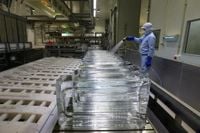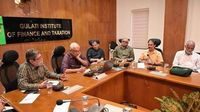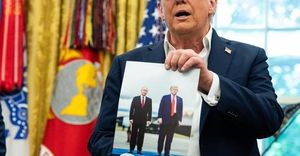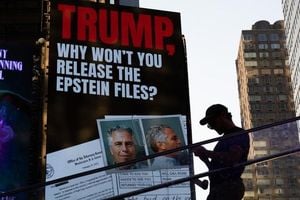On the heels of a turbulent summer for global trade and energy, three major developments have captured the attention of policymakers and industry leaders across Asia, Europe, and North America. From Taiwan’s high-stakes referendum on nuclear energy to Japan’s ongoing manufacturing struggles and the impact of new U.S. tariffs on Swiss watches, the shifting sands of international commerce and energy policy are creating both new opportunities and daunting challenges for governments and businesses alike.
This weekend, all eyes are on Taiwan as voters prepare to decide whether to restart a nuclear reactor at the Maanshan nuclear plant. The move comes just three months after Taiwan powered down its last nuclear unit, proudly declaring itself “nuclear-free.” Yet, as reported by National Interest, a surge in power shortages, rising electricity prices, and increasing grid instability have fueled a dramatic swing in public opinion. Recent polls indicate that two-thirds of Taiwanese now support nuclear energy as a means to reach the island’s ambitious net-zero emissions target by 2050.
Opposition parties, sensing an opening, have pushed for the referendum, arguing that Taiwan’s overwhelming 95 percent reliance on imported fossil fuels leaves it dangerously exposed—especially with the ever-present specter of a Chinese blockade. While former U.S. President Donald Trump recently assured that Chinese President Xi Jinping would not invade Taiwan during his tenure, Beijing’s policy of reunification remains unchanged, keeping the risk of conflict on the table. For many Taiwanese, the debate over nuclear energy is now as much about national security as it is about climate policy.
However, President Lai Ching-te and the ruling Democratic Progressive Party are standing firm against the referendum, calling the nuclear shutdown a “historic” achievement. Even if the referendum passes, its legal force is limited: it would only be valid for two years, and regulatory obstacles could delay or even nullify any restart. As National Interest notes, the vote is less a guarantee of immediate change and more a barometer of shifting public sentiment amid growing energy anxieties.
Across the East China Sea, South Korea is facing its own nuclear crossroads. A landmark January 2025 settlement with U.S. nuclear giant Westinghouse has dramatically narrowed the export horizons for Korea Hydro & Nuclear Power (KHNP) and Korea Electric Power Corporation (KEPCO). Under the terms of the deal, KHNP and KEPCO are now barred from bidding on new nuclear power projects in North America, the United Kingdom, most of the European Union, Ukraine, and Japan. Instead, their export opportunities are confined to Southeast and Central Asia, South America, the Middle East, South Africa, and Northern Africa.
The settlement, which arose from a protracted intellectual property dispute, imposes steep costs on the South Korean firms. KHNP must pay royalties of approximately $143 million per export project and guarantee Westinghouse contracts exceeding $714 million. The fallout has already been felt: KHNP has withdrawn from nuclear projects in Poland, Sweden, Slovenia, and the Netherlands, as reported by National Interest. South Korean lawmakers have not minced words, labeling the agreement a “slave contract” that “surrenders nuclear sovereignty to the US.” In response, the Seoul government has launched an official probe into the circumstances surrounding the deal.
With President Lee Jae Myung’s visit to Washington looming, the controversy threatens to overshadow efforts to strengthen the U.S.–South Korean nuclear partnership. KHNP’s chief executive is slated to meet with Westinghouse leaders to discuss a potential joint venture on U.S. and European projects—a move that could expand South Korea’s presence in developed markets, but likely as a junior partner under the current settlement. For the United States, the deal consolidates a strategic advantage at a time when President Donald Trump has pledged to quadruple America’s nuclear energy capacity by 2050. For Seoul, however, the question remains: will closer cooperation with Washington accelerate growth, or merely tether South Korea’s nuclear ambitions to American interests?
Meanwhile, in Texas, a new chapter in America’s nuclear story is unfolding. Fermi America, co-founded by former U.S. Energy Secretary Rick Perry, has signed an agreement with ASP Isotopes and Quantum Leap Energy to explore the construction of a high-assay low-enriched uranium (HALEU) enrichment facility. As National Interest details, the proposed site would handle not just enrichment but also conversion, deconversion, and fuel assembly fabrication—potentially positioning Texas as a major hub for advanced nuclear fuel.
This project builds on ASP’s existing supply agreements with TerraPower, including support for the first fuel cores of its Natrium reactor in Wyoming and a decade-long deal for up to 150 tonnes of HALEU starting in 2028. With Department of Energy demonstration projects moving forward but commercial HALEU production still absent in the U.S., private ventures like this could be crucial in bridging the gap between policy ambition and practical deployment. Still, the hurdles—cost, licensing, and the need to rapidly scale up a nascent industry—are formidable.
While the nuclear sector wrestles with geopolitics and supply chain challenges, Japan’s manufacturing industry is battling headwinds of its own. According to Stocktwits, the S&P Global flash Japan Manufacturing Purchasing Managers' Index (PMI) for August 2025 came in at 49.9, a slight improvement over July’s 48.9 but still below the 50-point threshold that separates contraction from growth. “This suggests the recovery in manufacturing output may be hard to sustain unless we see an improvement in sales in the near term,” observed Annabel Fiddes, Economics Associate Director at S&P Global Market Intelligence.
Foreign demand for Japanese goods and services slipped for the fifth consecutive month, and official data showed exports fell 2.6% in July 2025 compared to the previous year. The culprit? U.S. tariffs imposed by the Trump administration, which have weighed heavily on global trade. While Japan has managed to negotiate a lower 15% tariff rate—down from the 25% initially proposed by Washington—the paperwork for implementation is still pending and expected in the coming weeks.
Adding to the pressure, input prices for Japanese firms rose at a sharper pace in August, although the increase was less pronounced than in the first half of the year. Despite these challenges, the composite PMI—reflecting both manufacturing and services—rose to 51.9 in August, buoyed by robust growth in the services sector. Yet, as Fiddes pointed out, “Intense market competition and requests from clients for discounts had dampened overall pricing power. Notably, selling prices increased at the softest rate since last October, to suggest a stronger squeeze on operating margins.”
Tariff tremors are also being felt in the luxury goods market. Barclays analysts have outlined three possible scenarios for Swiss watch exports to the U.S. following the imposition of a steep 39% tariff, up from 10%. As reported by Investing.com, major Swiss brands have yet to adjust U.S. pricing, but with pre-tariff inventories running down, a decision is imminent. In one scenario, a 13% price hike in the U.S. could slash volumes for non-supply-constrained brands by up to 25%, with significant downside risks for Watches Of Switzerland Group PLC (WOSG). Alternatively, spreading a 2% price increase globally could steady U.S. demand but still pressure margins. The gloomiest outlook sees both supply-constrained and non-supply-constrained brands suffering double-digit volume declines, with Barclays cutting its WOSG price target to 425p from 555p to reflect these risks.
In a world where energy, trade, and policy are more intertwined than ever, the events of August 2025 offer a vivid snapshot of the shifting global landscape. Whether in the boardrooms of Seoul, the ballot boxes of Taiwan, or the factories of Japan, the decisions made now will reverberate for years to come.





